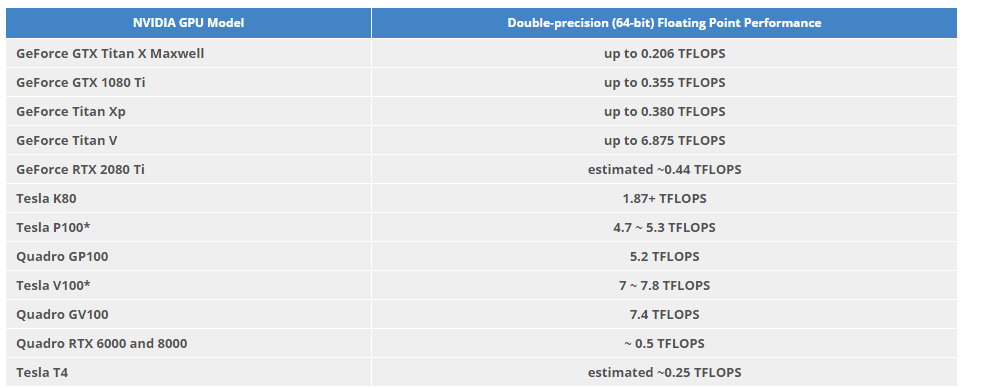While this won't give exact real world figures we can take the allocation of compute units on the architectures to get a maximum theoretical figure, with Pascal (Excluding GP100) at 1/32 double precision vs single precision (Or 1/64 half precision). Turing also has 1/32 max theoretical FP64 but of course moves to x2 FP16 like GP100 & Vega.
The double precision side just comes down to core count, a fully enabled TU102(RTX) has 2 DP units per SM for 144 total, GV100(Volta) has 32 DP units per SM for 2688 total.


